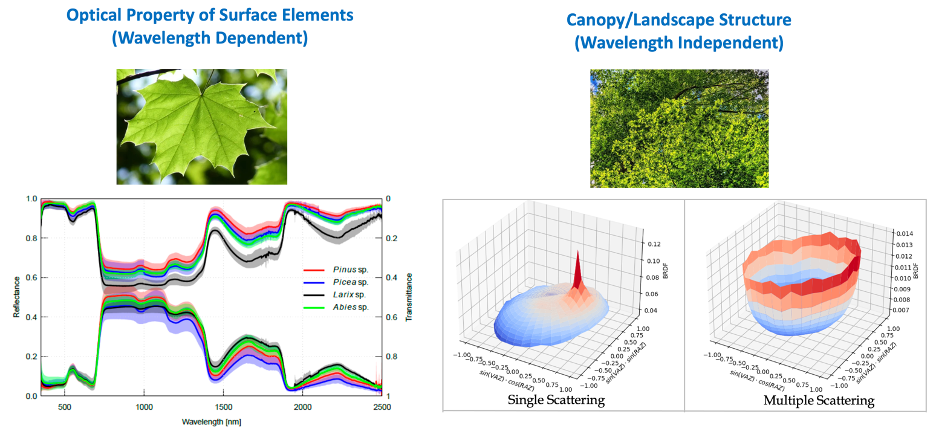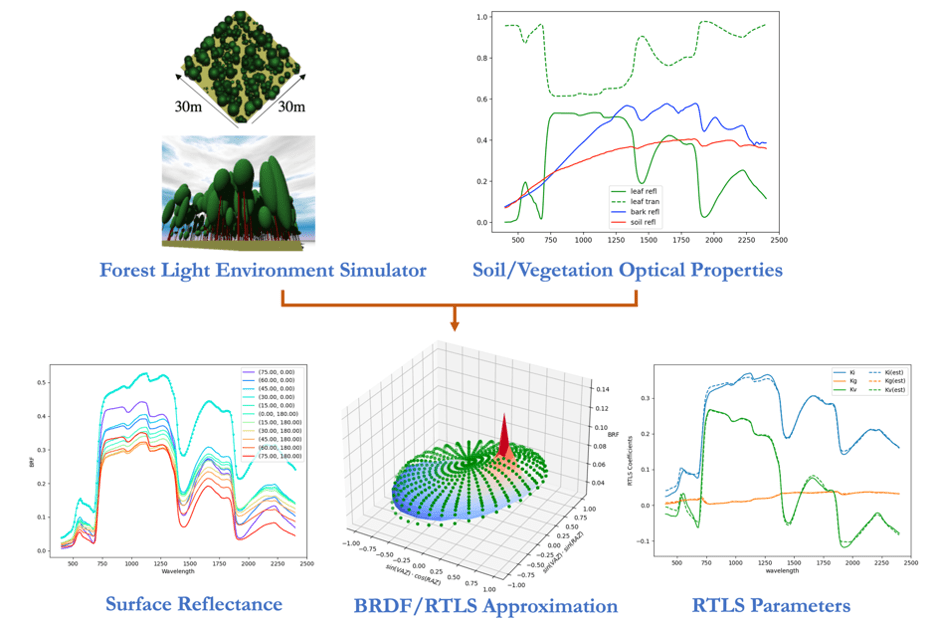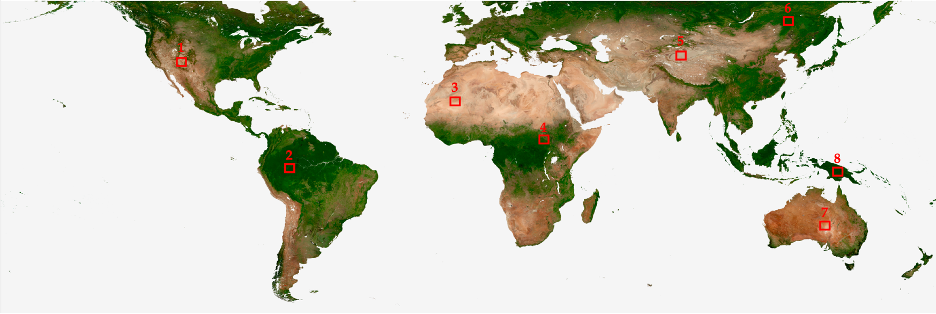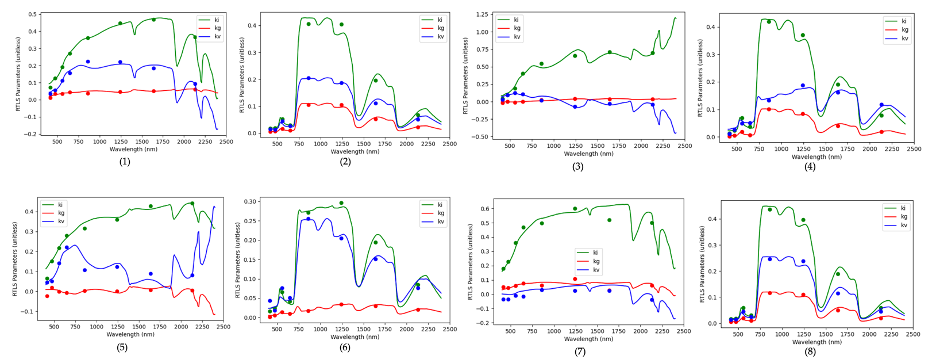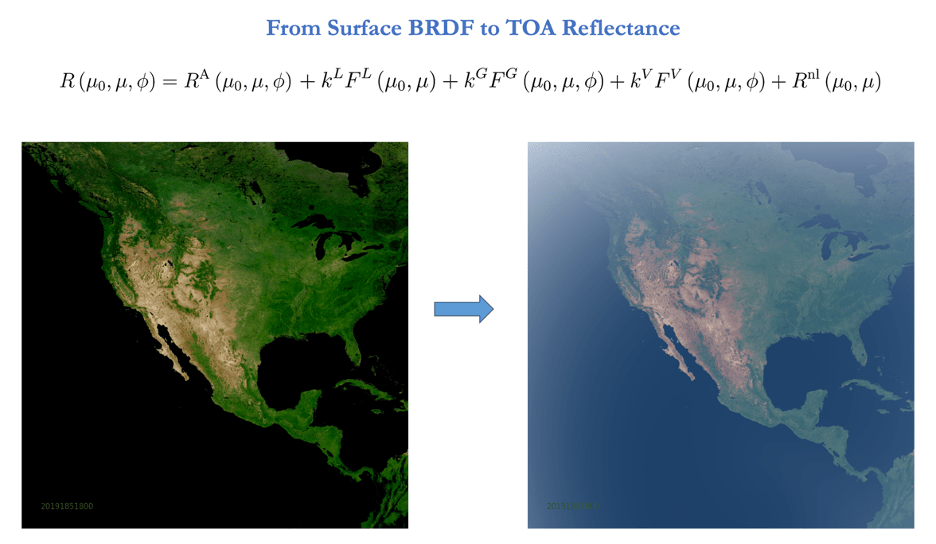Ames Global Hyperspectral Synthetic Data (AGHSD)
The Ames Global Hyperspectral Synthetic Dataset is derived to support the NASA Surface Biology and Geology (SBG) mission development. The dataset includes surface Bidirectional Reflectance Distribution Function (BRDF) and the top-of-atmosphere (TOA) reflectance. In particular, the AGHSD surface BRDF is generated based on the corresponding MODIS BRDF products. The atmospheric radiative transfer model LibRadtran is then used to propagate the surface BRDF to TOA radiance/reflectance under satellite derived atmospheric conditions.
Surface BRDF Algorithm
Because MODIS provides estimates of BRDF parameters at only a few broad bands, the challenge of AGHSD generation is to identify a simple yet robust algorithm to infer BRDF at unobserved wavelengths based on limited observations. We use theories of radiative transfer in vegetation canopies to derive a relationship that indicates that the RTLS parameterization of hyperspectral surface BRDF can be accurately approximated as a weighted sum of the soil surface reflectance, the leaf single albedo, and the canopy scattering coefficient, where the weights or coefficients are spectrally invariant and thus easy to estimate by regression techniques.
We validate the algorithm with simulations by the Monte Carlo Ray Tracing Model FLiES (Forest Light Environment Simulator) and the results are highly consistent with the theoretic derivation.
Surface BRDF Products
Using reflectance/transmittance of soil and vegetation from existing spectral libraries, we apply the algorithm to generate the AGHSD BRDF product at 1km and 8-day resolutions for the year of 2019.
TOA Radiance and Reflectance
We adopt the MAIAC (Multi-Angle Implementation of Atmospheric Correction) algorithm to derive the hyperspectral synthetic TOA radiance/reflectance from the surface BRDF. The algorithm is based on the method of Green’s Function. We use the LibRadtran radiative transfer model to generate the Look-Up-Tables (LUT) for 213 spectral bands from 380nm to 2500nm at a resolution of 10nm, which help significantly improve the computational efficiency of the algorithm. Examples of the prototype results are as follows.























